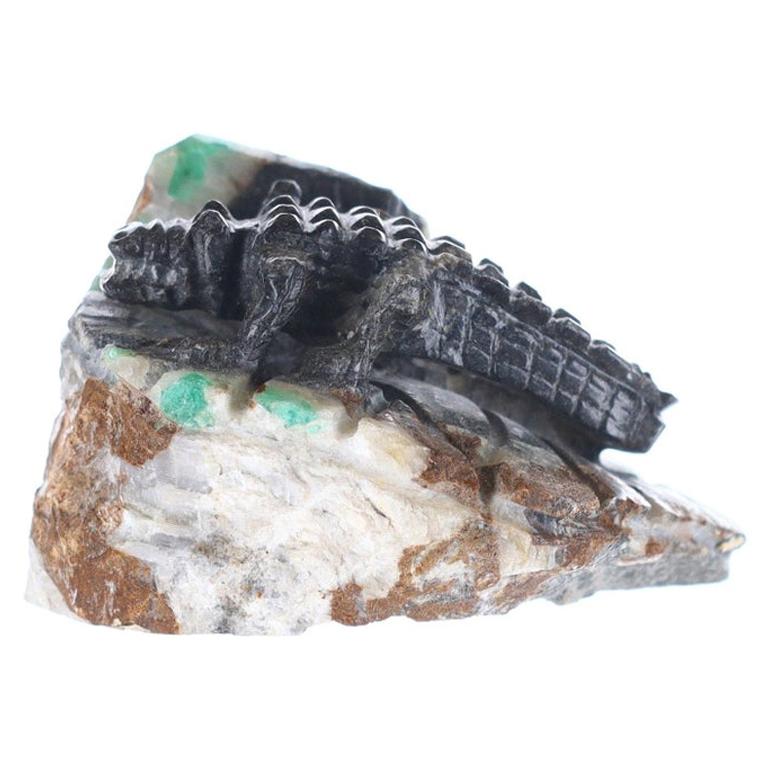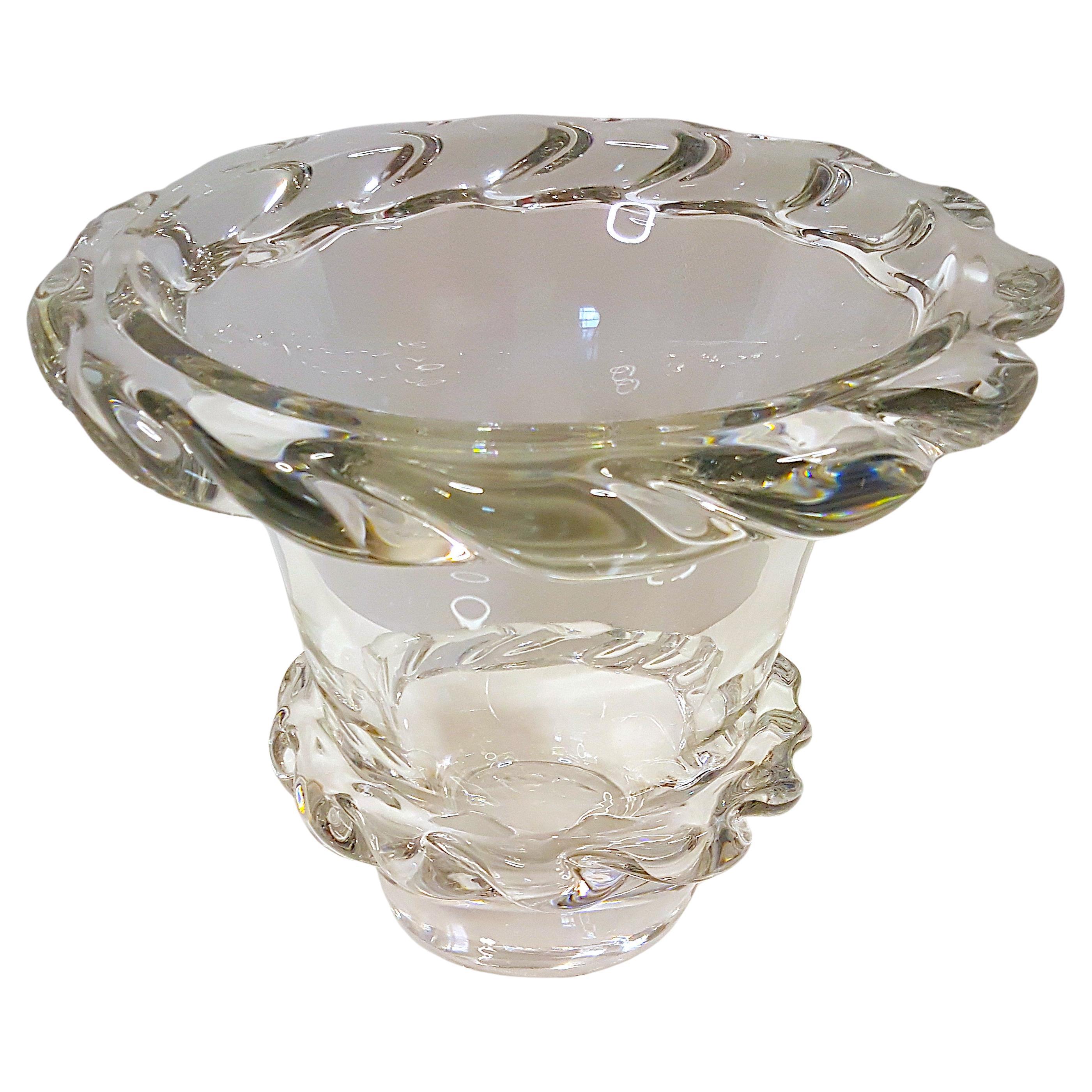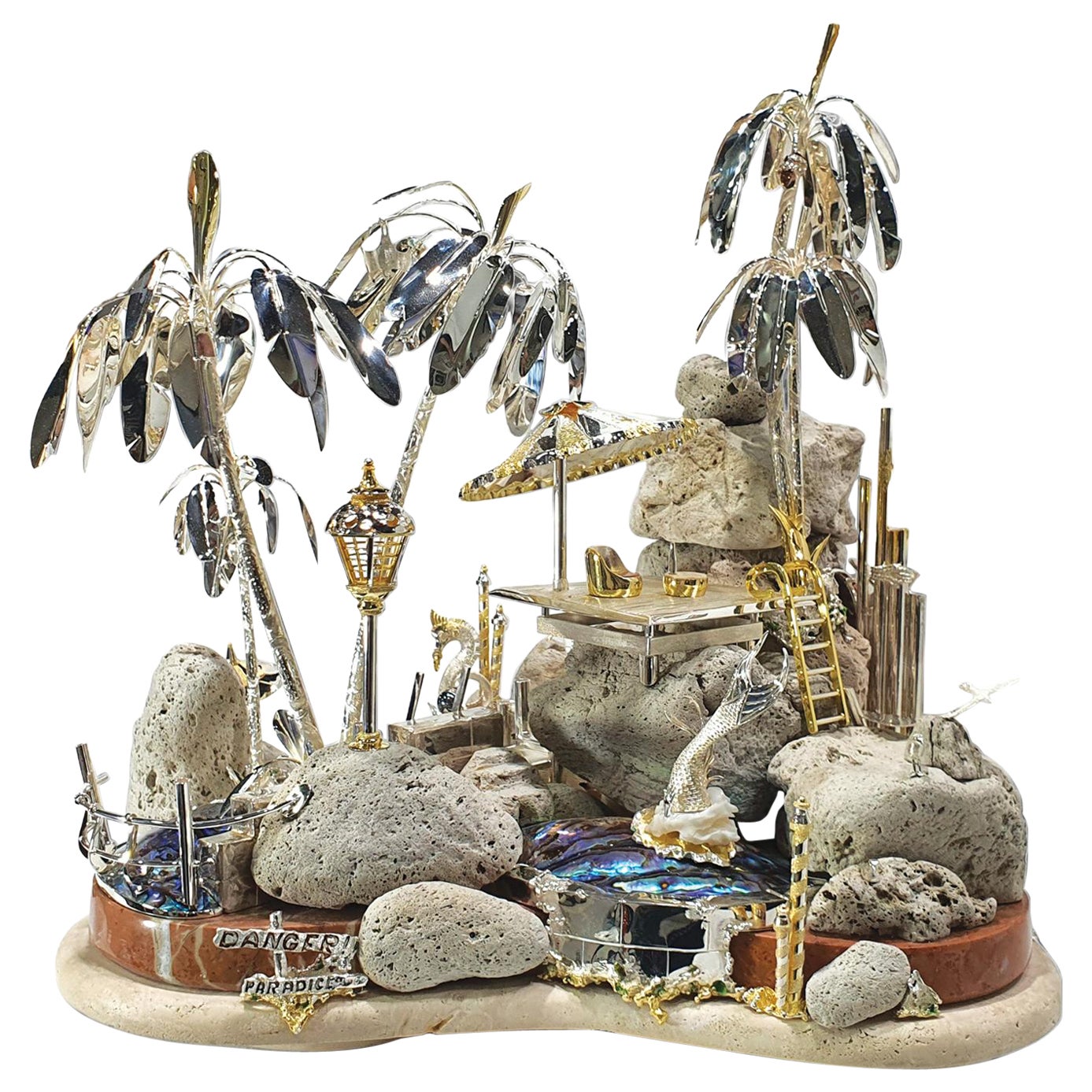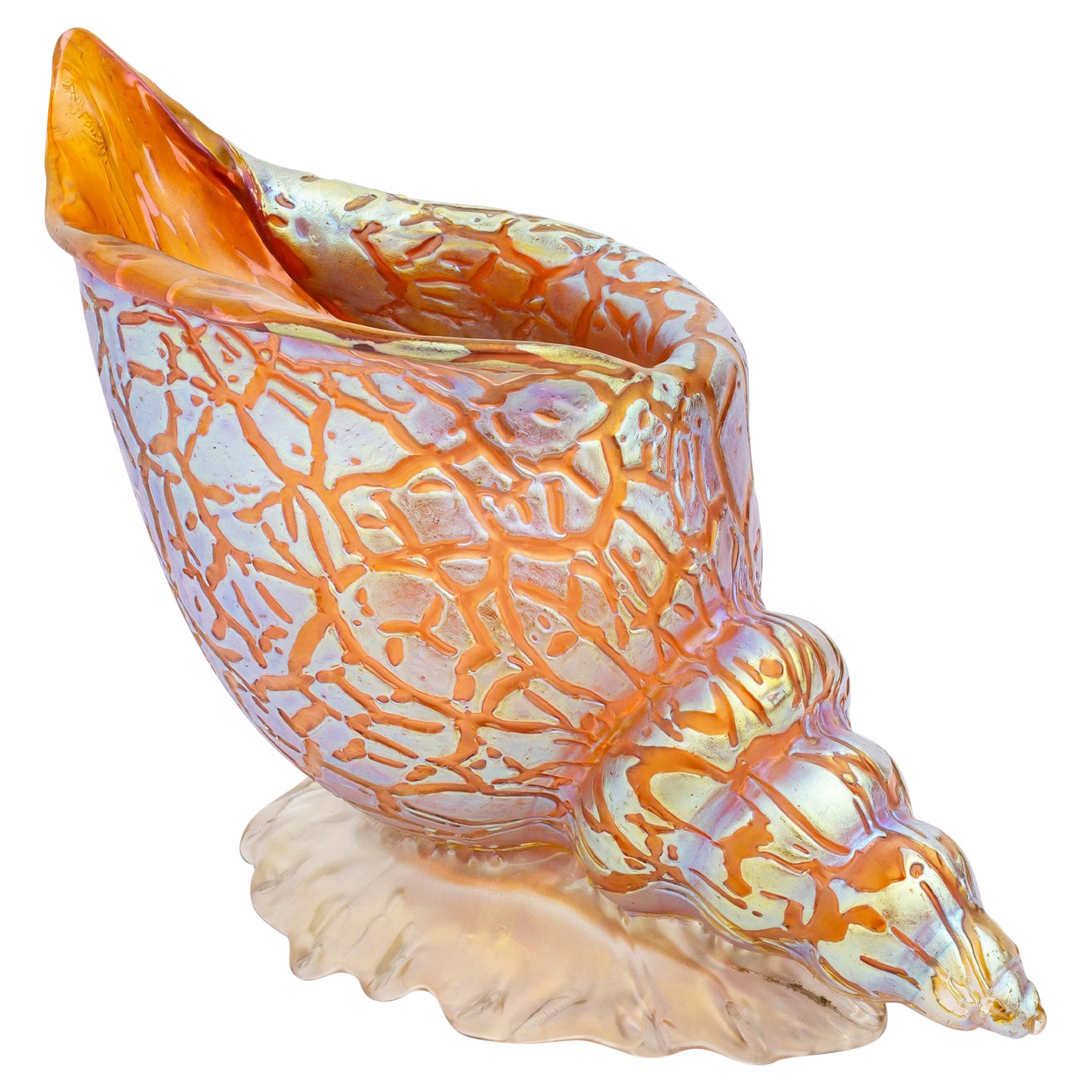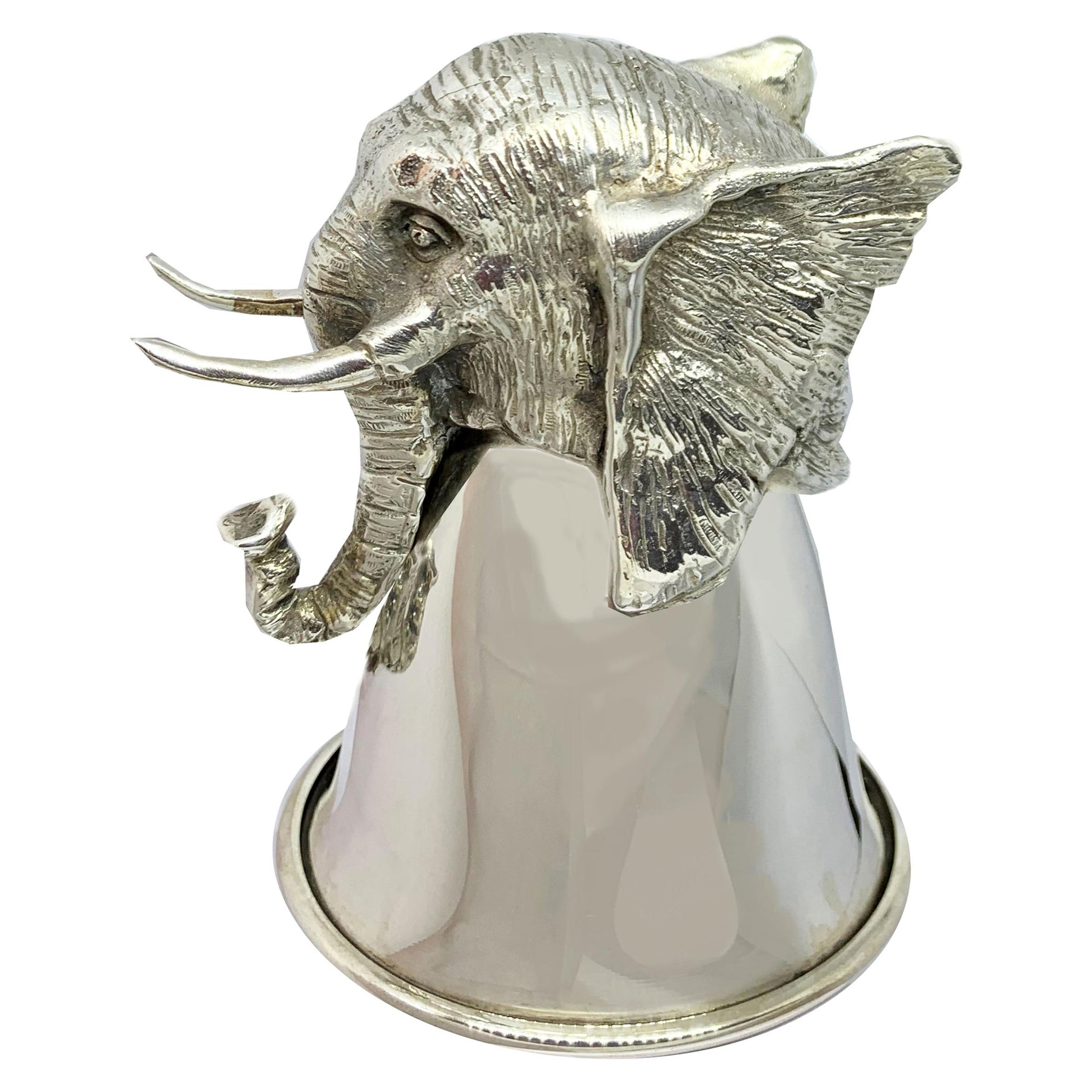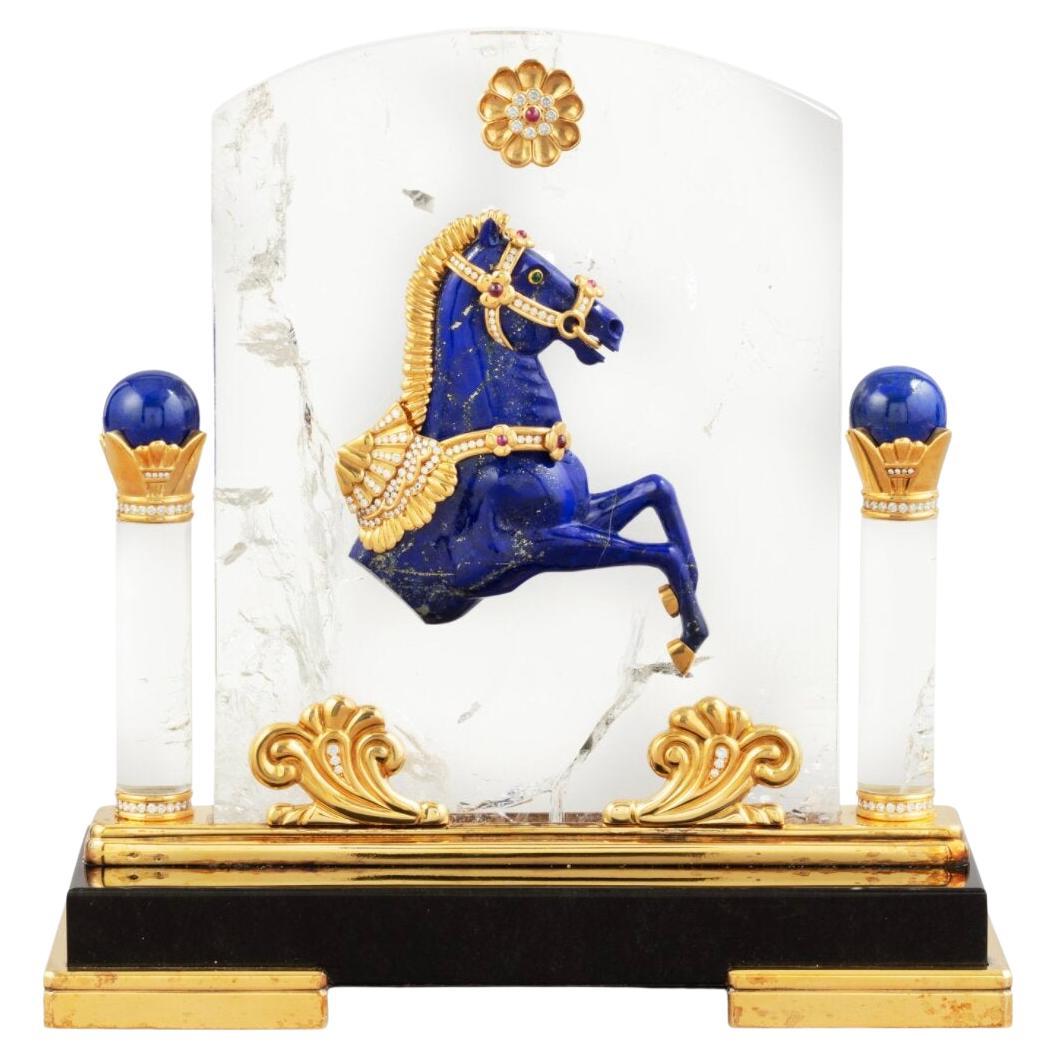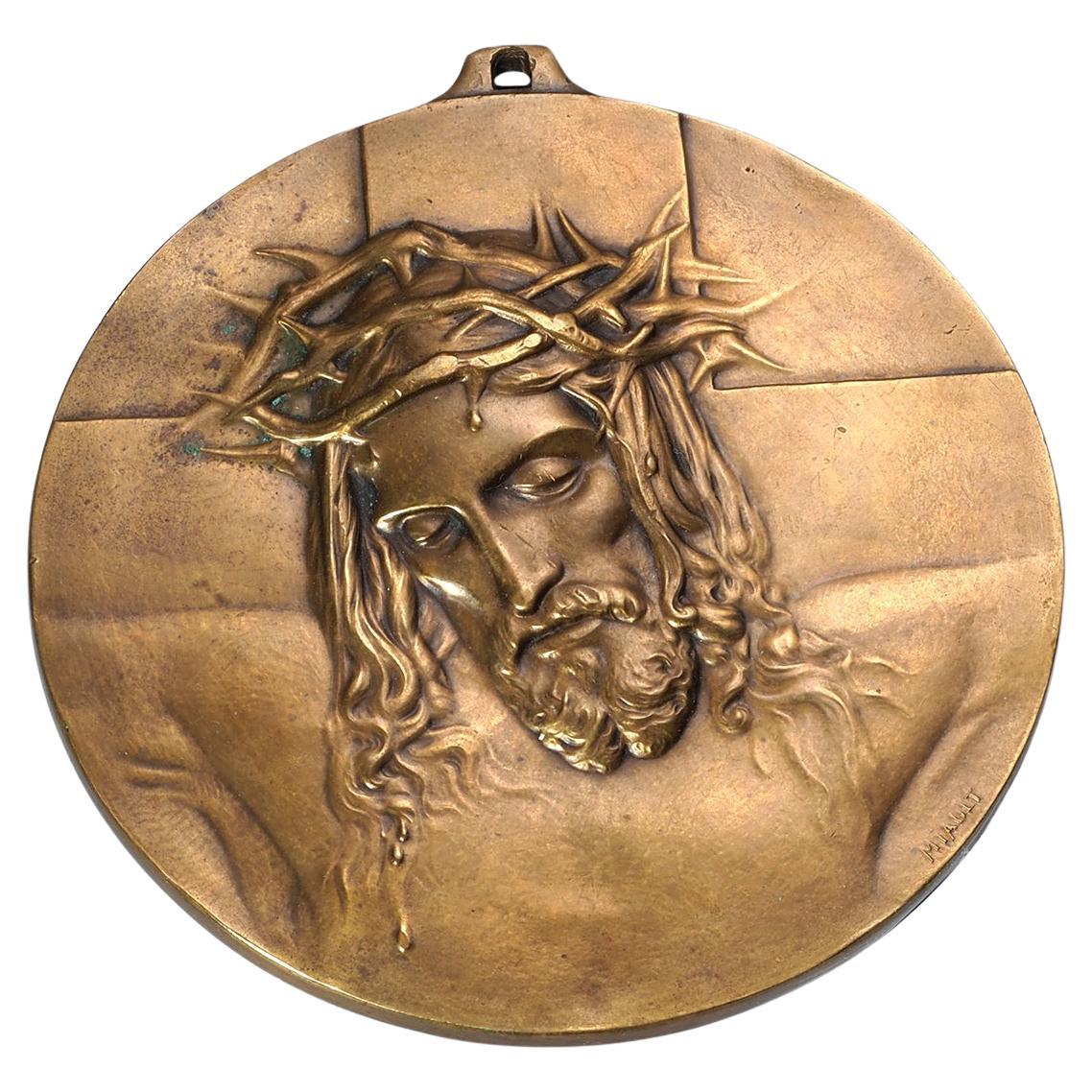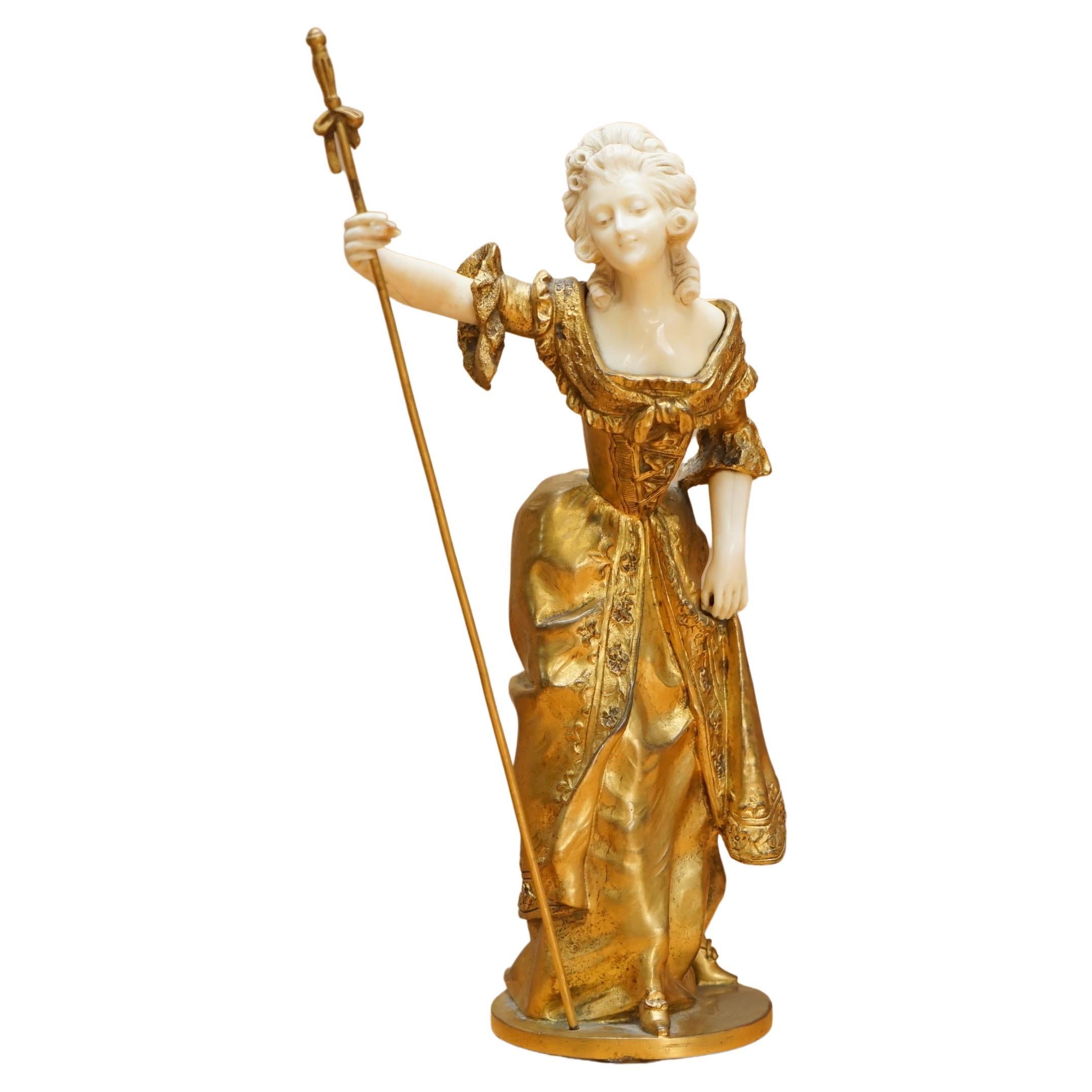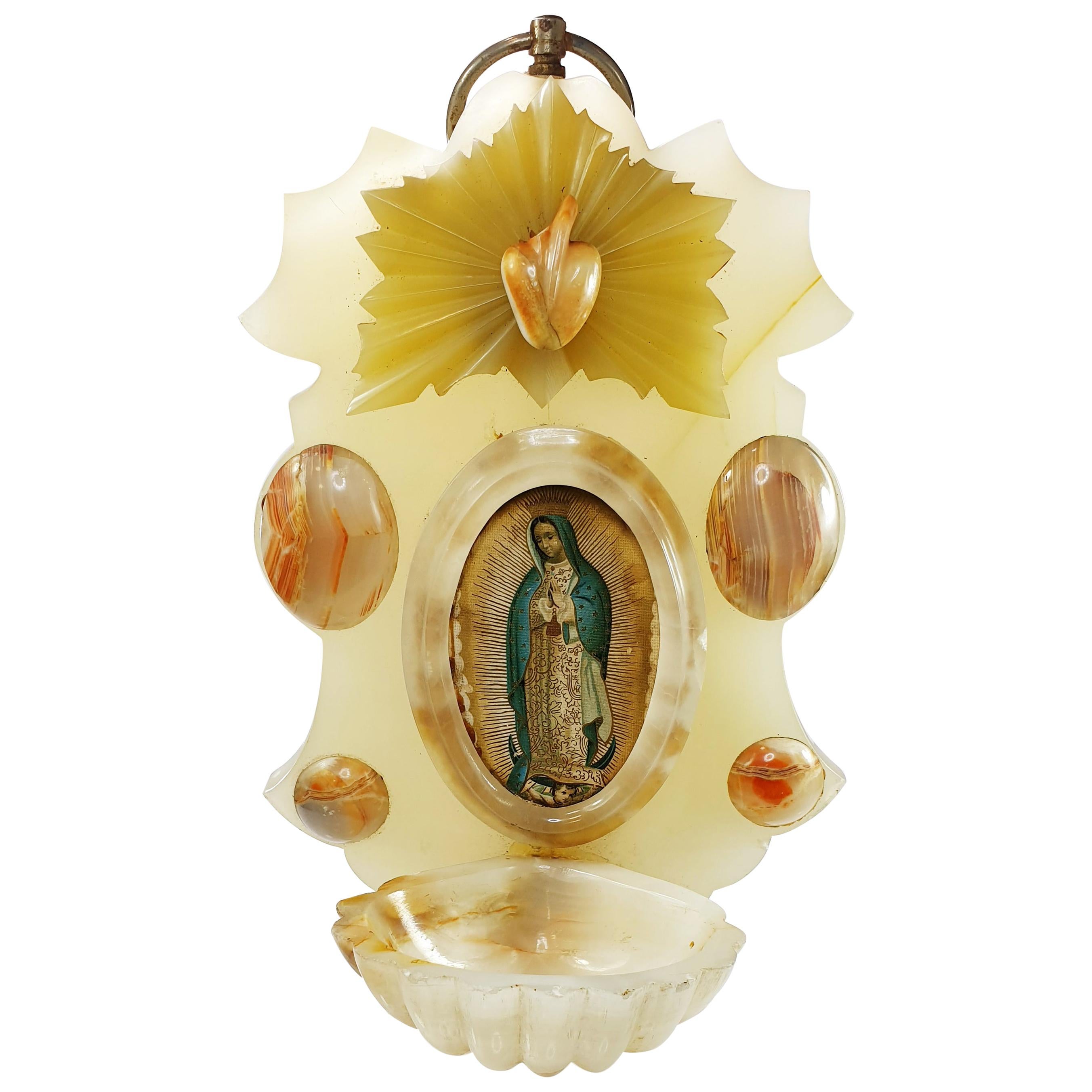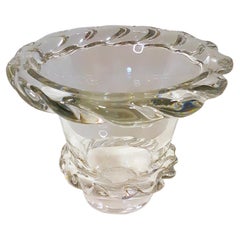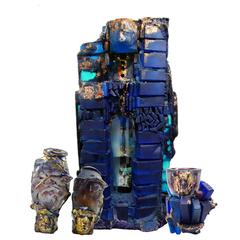
Raymond Martinez French Glass Sculpture and Vase Collection
View Similar Items
1 of 10
Raymond Martinez French Glass Sculpture and Vase Collection
About the Item
- Creator:Raymond Martinez
- Dimensions:Height: 25.5 in (647.7 mm)Width: 13.5 in (342.9 mm)Depth: 11 in (279.4 mm)
- Style:
- Place of Origin:
- Period:
- Date of Manufacture:20th Century
- Condition:
- Seller Location:Sunny Isles Beach, FL
- Reference Number:Seller: 19-74, 19-76, 19-77, 19-781stDibs: LU620589982
You May Also Like
- Colombian Emerald Alligator Rough Crystal SculptureLocated in Jupiter, FLThis is a beautiful and one-of-a-kind rough Colombian emerald alligator sculpture. Hand-carved, and made of black shale, calcite, ambrosia, and natural Colombian emerald rough crystals...Category
2010s Colombian Figurines and Sculptures
- Mellerio Paris, a French Gold, Diamonds, Silver, and Smoky Quartz Carved HorseBy Mellerio dits MellerLocated in New York, NYMellerio Paris, A French Gold, Diamonds, Silver-Gilt, Rock-Crystal, Jade, Mother-Of-Pearl and Smoky Quartz, Carved Horse Sculpture, Jeweled Mounted Object. An extremely rare and unique, one of a kind French gold, diamonds, Silver-gilt, rock-crystal, jade, obsidian, mother-of-pearl, and smoky quartz carved jeweled sculpture "CHEVAUX DE LEGENDE", "A Legendary Horse" by Mellerio, Paris, circa 1991. Sitting on black obsidian base, the solid rock-crystal slab is finely applied with a carved smoky -quartz and jade horse with a harness mounted in 18k gold, brilliant -cut diamonds, rubies, turquoise, and amethyst chains and pendants. The top columns adorned with 18k gold and brilliant cut diamond pendants, the bottom with gold and mother of pearl plaques. The obsidian base with a plaque engraved: CHEVAUX DE LEGENDE" / N° 05 / MELLERIO DITS MELLER / PARIS / 5003 D The piece is in excellent condition and comes with a custom made wood case made for transport. It's very elegant and has French hallmarks throughout. A truly magnificent piece. Measures 10.5" high x 8.5" wide x 4" deep Founded in France in 1613 by the descendants of Italian immigrants from the Vigezzo Valley in the north of Italy, Mellerio is one of the oldest jewellery houses in Europe. The family business soon attracted the attention of the Royal Court and Marie Antoinette herself reportedly purchased a precious bracelet featuring 7 cameos surrounded by rubies in 1780. Later on, in the 19th century, Mellerio became the official supplier of the French Royal family and the Court of Netherland. Mellerio creates many jewellery items, all set with rare gems such as peridots, amethysts, aquamarines, citrines and topaz, applying for a patent, the flexible stem, a very supple and light jewellery mechanism. Mellerio remains also well known for their spectacular series of Art Nouveau jewels, created at the beginning of the 20th century, as well as for the creation of trophies rewarding some of the greatest footfall and tennis players of history. In 1993, the jewellery house launched their first watch collection. Today, Mellerio has stores in Paris, Japan and Hong Kong. July 14, 1789: this date is known throughout the world as the beginning of the French Revolution. According to a ledger belonging to House of Mellerio, this was also the day that the jeweler sold a golden key to the Comte de Coutance for 10 livres. This ledger, as well as inventories dating as far back as 1768, are the jeweler’s oldest archives. These archives have continued to grow over the years, as the House, established on rue de la Paix in Paris, still lives on today, still in the hands of the same family from Craveggia, in the North of Italy. The tumultuous history of the Mellerio family in France probably goes as far back as the Italian wars of the Renaissance, but the first official document proving their commercial activity in Paris dates back to 1613. This document is the famous royal warrant awarded by Marie de Medici to a number of Italian families established along the rue des Lombards, including the Mellerios, allowing them to sell “small jewelery items”, therefore granting them a small exception to the traditional monopoly enjoyed by Parisian jewelers. At that time, powerful corporations regulated the operations and customs of Parisian business, but thanks to this exceptional warrant, the Mellerios managed to escape the confines of this framework. Today, this wax-sealed document is kept at the city hall of Craveggia. From 1613 to the Revolution, the Mellerios lived between France and Italy. The corporations tried many times to put an end to their trade privileges, but all in vain, as a dynasty of sovereigns renewed the warrant. Always marrying and often retiring in Craveggia, the Mellerios continued to maintain their jewelry business in Paris. At first, they did this without a shop. Wearing backpacks (wooden boxes divided into small compartments where jewels were kept), they would tour town fairs around Paris and royal castles. This is how Jean-Baptiste Mellerio (1765-1850) is said to have sold a bracelet set with rubies and Antique cameos to Marie-Antoinette, which still exists today. Many elements seem to prove the veracity of this anecdote. The queen was particularly fond of cameos, which cover the entire background of her famous jewelry cabinet, and ruby was her favorite stone after diamond. The famous bracelet, reacquired a few years ago by the House of Mellerio, is indeed an 18th century jewel, set with antique cameos representing the profiles of Roman emperors. Two branches of the family were operating in Paris during this time, under the reign of Louis XVI: that of Jean-François (1746-1828), the paternal ancestor of the current Mellerios, and that of Jean-Baptiste (1765-1850). The French Revolution forced them to return to Italy. However, both Jean-Baptiste and François Mellerio (1772-1843), who was the son of Jean-François, were eventually able to return to Paris after the founding of the Consulate. Jean-Baptiste opened a shop at the Iron Crown of rue Vivienne, and François opened his at the Palais des Tuileries, rue du Coq Saint-Honoré. His well-organized order books give an idea of his high-ranking clientele during the “Old Regime”, among which were the Comte and Comtesse Octave de Segur, the Marquise (later Duchess) de Tourzel, former governess of the royal children, and her daughter, the Comtesse de Bearn, the Craufurds -who organized the flight to Varennes, the Duc and Duchess de Gramont, the Comtesse de Boigne, and Madame de Souza, Talleyrand’s mistress. We also see the names of the imperial family: Empress Josephine, the Queen of Holland, Princess Elisa, Caroline and Pauline. At that time, the House of Mellerio specialized, among other things, in the trade of antique cameos, a newly fashionable genre of jewel that captured the imagination of all the princesses and noble women of the time. The years of the Restauration and July Monarchy were among the most glorious. The Bourbons were back on the throne, and the clientele of the House of Mellerio had regained its former wealth. Mellerio supplied Louis-Philippe, Duke of Orléans, as well as his mother, wife and sister, with sumptuous jewels, including a set of emeralds made piece by piece, while the Duke of Bourbon, last prince of the House of Condé, offered diamonds to his mistress, the scheming Baronne de Feucheres, and Monsieur de LaFayette also bought cameos for one of his granddaughters. For the first time, Mellerio ventured into the world of arts in 1815, when Carlotta Grisi, a famous dancer who created Giselle, as well as an actress named Rachel, bought jewels at the Mellerio store on rue de la Paix. 1848 marked a new turning point. France once again became a Republic. François Mellerio handed the company over to his son, Jean, and the latter decided to travel to Spain to build a new clientele. He later became one of the jewelers of the royal family, and met Eugénie de Montijo, who remained a faithful client when she became empress of the French people. The Imperial years were lavish. During the Second Empire, Paris was a pageant of crinoline dresses designed by Worth, while jewels by Mellerio, Worth’s neighbour on the rue de la Paix, adorned the noble women of the Tuileries court. The Empress bought pearls. Mathilde Bonaparte...Category
20th Century French Figurines and Sculptures
MaterialsJade, Quartz, Rock Crystal, Ruby, Turquoise, Amethyst, Diamond, Gold, Si...
- DaumNancyFrance Sign 1925 GlassApplications LeadCrystal ArtDeco Sculptural VaseBy DaumLocated in Chicago, ILVase sign: Daum Nancy France. Evidenced by this Daum sculptural colorless blown and hot-shaped lead-crystal heavy vessel vase, the finest irreproducible artistic works in the history of the French glass maker featured ornamental thick glass applications, while its most in-demand ArtDeco-period pieces were made between 1925 and 1935 with very few major pieces remaining in private hands and even less without damage. As a significant gift acquired from Don Jacques Daum in 1950, a similarly shaped, constructed and sized circa-1925 vase with "stylized foliage" motif is in the collection of the French Museum of Decorative Arts in Paris as Inventory #36309. A later-produced clear vase with a similar application motif at the rim, but in a "Champagne" bubbled style, is in the published book about the Leo and Irina Esterkin acquisitions from 1910-1940 titled Daum Art Deco Glass--A Private Collection. On our prime-condition antique vase, applied transparent glass is styled in high relief into a flowing undulating motif that evolved from Daum's Art Nouveau foliage designs. The angular and curvilinear shapes of this vessel epitomize the bold vases, bowls and sculptures for which Daum is best known. Its tiny pencil-etched signature on the side near the bottom reads "Daum (plus the Lorraine-cross symbol) Nancy France", which resembles some published signatures since 1925. Revealing how ahead of its time this particular design was--after WWII in 1945 coinciding with the revitalization of the French glass industry--Daum used...Category
Vintage 1920s French Art Deco Figurines and Sculptures
MaterialsCrystal
- Paul Amey "The Island" Hand Crafted Artisan Silver SculptureBy Paul AmeyLocated in Tewantin, QueenslandThe objet d'art consists of a romantic interpretation of an island atoll occupied by a Caruso type character who is in no hurry to finish his hobby (the boat), instead hiding his too...Category
2010s Australian Artisan Figurines and Sculptures
MaterialsGold Plate, Silver
- Paul Amey "The Robber" Silver Sculpture Hand Crafted by ArtisanBy Paul AmeyLocated in Tewantin, Queensland“THE ROBBER” Silver Sculpture “The Robber” was designed and hand crafted by multi award-winning jeweller Paul Amey in Australia. Paul’s first ever sculptur...Category
2010s Australian Artisan Figurines and Sculptures
MaterialsJasper, Hematite, Silver
- Glass Conch Shell by Loetz in Pink Ground with Mimosa DecorLocated in Brisbane, QLDAn Austrian glass conch shell by Bohemian glass maker, Loetz in the pink ground with mimosa decor, circa 1890. The shell and snail form vases were among the most popular of Loetz's d...Category
Antique Late 19th Century Czech Jugendstil Figurines and Sculptures
